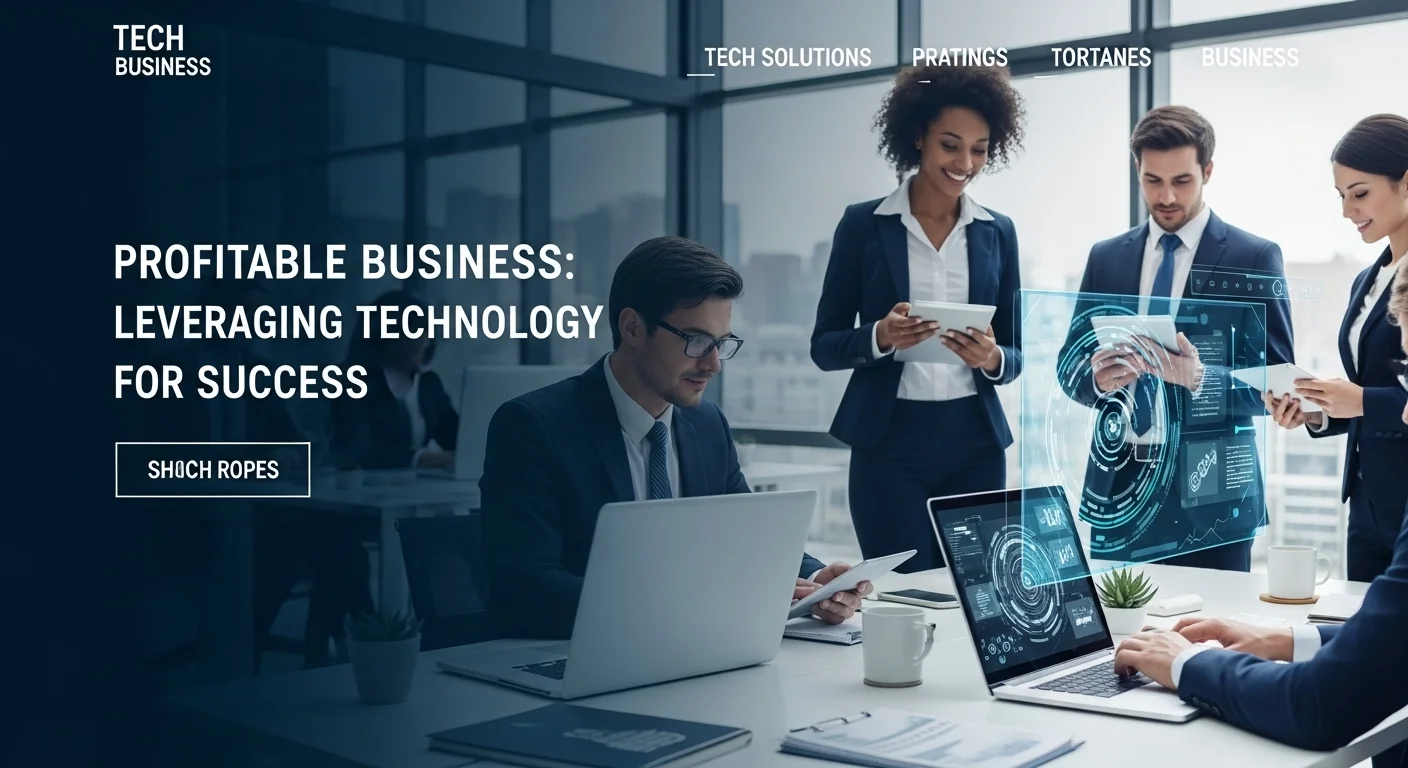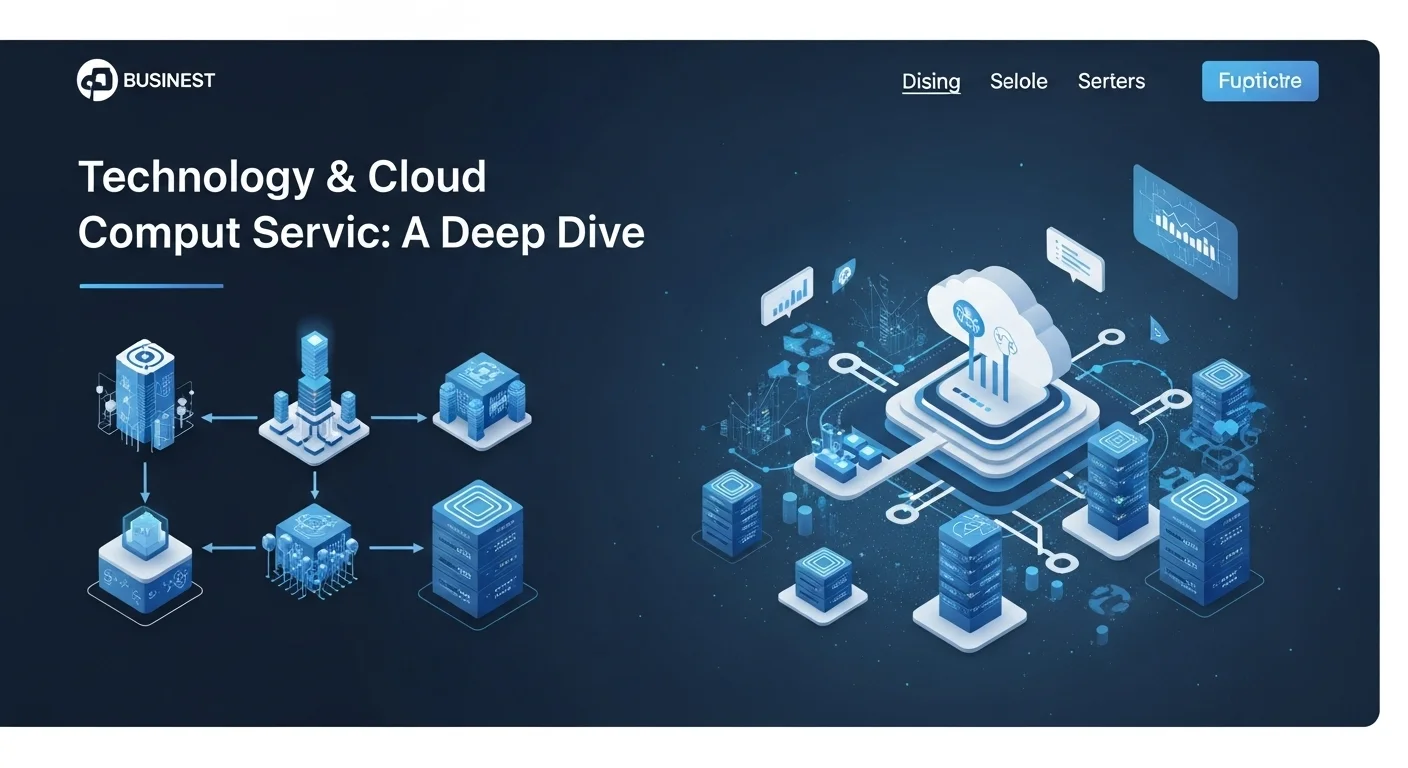The Founder's Playbook: How to Build a Truly Profitable Business with Technology

Executive Summary
In my years of building and advising tech companies, I've learned one crucial lesson: technology isn't just a tool; it's the engine of modern profit. If you're an entrepreneur dreaming of launching a successful venture, you've come to the right place. This guide is my personal playbook, distilled from countless hours in the startup world. We'll cut through the jargon and get straight to what works. I'll walk you through the most lucrative tech sectors like SaaS and AI, share the business models that actually scale, and give you actionable advice for navigating the competitive landscape. Forget abstract theories—this is a practical roadmap to building a financially successful business in today's digital world.
Table of Contents
What *Really* Makes a Tech Business Profitable?
When I first started out, 'profit' was a simple equation: revenue minus costs. But in the world of technology, a truly profitable business is so much more nuanced. It’s an enterprise where technology isn't just supporting the business; it *is* the business. Technology is the magic that allows you to scale massively, automate complex work, and reach a global audience from your laptop. This powerful combination is why some of the most lucrative ventures today are born from code. For aspiring founders, this means the most exciting opportunities are digital. Think about it: once you build a great piece of software, you can sell it to ten, a thousand, or a million people with minimal extra cost. That's a business model that creates incredibly high-margin companies, something unthinkable in most traditional industries.
If you look at the most successful companies in the US, names like Apple, Microsoft, and Google dominate the list. They aren't just tech giants; they are profitability machines. Their success story is the ultimate proof of how technology creates immense value. But it's not just about the titans. I've seen a thriving ecosystem of startups create incredible wealth by finding a niche and solving a specific problem better than anyone else. These innovators are diving into fields like artificial intelligence (AI), cybersecurity, and cloud computing. The great news? The barrier to entry has never been lower. Thanks to cloud platforms like Amazon Web Services (AWS) or Microsoft Azure, you don't need a million-dollar server room anymore. You can rent all the computing power you need and pay as you go. This has completely changed the game, making it possible for anyone with a great idea and the right skills to build a financially successful startup.
Exploring High-Profit Technology Sectors
To find your opportunity, you need to know where to look. Let's explore some of the specific tech sectors that are consistently generating impressive profits.
Software as a Service (SaaS)
I remember when we launched our first SaaS product. The shift from one-time license fees to a recurring subscription model was a complete game-changer. SaaS gives you a predictable revenue stream, which is gold for financial planning and incredibly attractive to investors. For customers, it means lower initial costs and always having the latest software version. Companies like Salesforce and Adobe have built empires on this model. For an entrepreneur, creating a specialized SaaS tool that solves a real business pain point is one of the most reliable paths to building a valuable company. Once you reach a critical mass of subscribers, the potential for high margins is enormous.
Cybersecurity Services
As our lives move online, the threat of cyberattacks becomes more real every day. I've seen firsthand how a single data breach can devastate a business. This has created a massive, urgent demand for cybersecurity, making it one of the most vital and profitable fields in tech. These firms offer everything from threat detection and security audits to training employees not to click on suspicious links. Many operate on a managed service model, providing ongoing protection for a monthly fee. This recurring revenue, coupled with the constant threat, ensures a steady demand. The expertise required is high, but for those with the right skills, it's a deeply rewarding and financially sound business to build.
Artificial Intelligence and Machine Learning
AI and Machine Learning are no longer just buzzwords; they're practical tools changing every industry. AI can analyze huge datasets to find patterns, make predictions, and automate work that once took humans hours. I've worked on projects using AI to personalize marketing for e-commerce stores and predict when factory machines need maintenance. The applications are endless. A startup that can harness AI to solve a unique problem has a massive competitive advantage. The most valuable company of the next decade might very well be one that uses AI in a way no one has thought of yet.
Cloud Computing Solutions
The move to the cloud is one of the biggest shifts in technology history. Companies are ditching their old servers and moving everything to the cloud to gain flexibility and cut costs. While giants like AWS and Azure provide the foundation, a huge ecosystem of businesses has sprung up to help companies make the move. They offer services like cloud migration, cost optimization, and building new cloud-native apps. For a founder, offering specialized cloud consulting or developing a unique application that runs on the cloud can be an incredibly lucrative venture. As more businesses go digital, the demand for cloud expertise will only continue to grow.
In short, the intersection of technology and business is a fertile ground for creating wealth. SaaS, cybersecurity, AI, and the cloud are just the beginning. The real key is to find a genuine problem and use technology to build a smart, scalable, and valuable solution for it. The digital age has opened doors for everyone, and the next great success story could be yours.

The Founder's Playbook: Tech and Business Strategies for Success
Having a brilliant idea is the spark, but it won't get you far without a solid plan. Building a profitable tech company requires a smart combination of solid engineering, sharp business tactics, and using your resources wisely. This is my guide to transforming a promising concept into a business that lasts. We'll get into the practical side of technology, explore different business models, and help you make the right calls. My focus here is on building companies with high-profit potential, especially those with scalable, recurring revenue streams.
Technical Foundations for a Profitable Venture
The heart of any great tech business is a well-built product. The technical choices you make early on can dramatically impact your profitability down the road, from how fast you can launch to how much it costs to maintain.
Agile Development and DevOps
Gone are the days of spending a year building a product in secret, only to find out nobody wants it. Successful companies now use Agile and DevOps. Think of Agile development like building with LEGOs: you create and test small pieces in short cycles, or 'sprints.' This allows you to get feedback fast and make sure you're building something people actually need. DevOps takes this a step further by bridging the gap between the people who build the software and those who run it. By automating testing and deployment, you can release new features and fixes quickly and safely. This speed is your competitive advantage and a huge driver of profit.
Leveraging Open-Source Technologies
Why reinvent the wheel? Open-source software (OSS) is a gift to modern developers. It's software with publicly available code that anyone can use, modify, and build upon. By using established open-source tools and frameworks, you can slash development time and costs. It's a huge advantage, especially for a startup with a tight budget. For example, many web applications are built on a stack of open-source technologies (like Linux, Apache, MySQL, PHP/Python/Node.js). You're literally standing on the shoulders of giants, and it allows you to focus your energy on what makes your product unique.
Microservices Architecture
When an application gets big and complex, building it as one giant block (a 'monolith') can become a nightmare to update and scale. A microservices architecture is a better approach. You break the application down into a collection of small, independent services. Each service handles one specific job and can be developed, deployed, and scaled on its own. I've seen this transform development teams. Different teams can work independently, using the best tech for their specific service. If one part fails, it doesn't crash the whole system. This is how giants like Netflix and Amazon stay so agile, and it's a critical strategy for any business aiming for rapid growth.
Smart Business Strategies for Tech Companies
A fantastic product can still fail without a smart business strategy. You need to know how to find customers, keep them happy, and generate revenue.
Choosing the Right Revenue Model
How you make money is one of the most critical decisions you'll make. I've seen so many founders get obsessed with a 'freemium' model because it sounds easy, but converting free users to paying ones is incredibly hard. For most, a simpler approach is better to start. Here are a few popular models:
- Subscription (SaaS): My personal favorite. Predictable, recurring revenue. The gold standard for many successful tech companies.
- Freemium: Offer a basic version for free to attract a large user base, then upsell a premium version. Works for companies like Spotify and Dropbox, but requires massive scale.
- Usage-Based: Customers pay based on how much they use. Common for cloud services (pay-per-gigabyte) or APIs (pay-per-call).
- Marketplace: Connect buyers and sellers and take a cut of each transaction. Think Uber, Airbnb, or the App Store.
Analyze your product and your target customer carefully. Choose the model that aligns with your goals and has the best chance of becoming profitable.
Data-Driven Decision Making
In the digital world, data is your superpower. The best tech companies are obsessive about tracking everything. They use analytics to understand user behavior, measure marketing effectiveness, and find ways to improve their product. This approach replaces guesswork with real evidence. A simple example is A/B testing, where you show two versions of a webpage to different users to see which one performs better. This constant cycle of testing, learning, and optimizing is a trademark of highly profitable tech businesses.
Focus on Customer Success
In a subscription world, keeping a customer is just as important as acquiring one. It's also much cheaper. This is why the 'Customer Success' role has become so important. It’s a proactive approach to making sure your customers are happy and getting real value from your product. This involves great onboarding, ongoing training, and checking in to see how you can help them achieve their goals. A happy customer is less likely to cancel, more likely to upgrade, and will become your best salesperson by recommending you to others. This focus on building long-term relationships is a key ingredient for sustainable growth.

Advanced Tips for Scaling and Sustaining Your Tech Venture
Once your business is up and running, the game changes. It's no longer about survival; it's about smart growth and continuous improvement. The journey to profitability is a marathon, and this section is about the strategies that will help you run it well. These are the tips I share with founders to help them optimize their operations, foster innovation, and secure a lasting place in the market.
Best Practices for Long-Term Profitability
Sustaining success requires a deep commitment to excellence across the board. Here are the practices that separate the good from the great.
Cultivate a Culture of Innovation
Technology moves at lightning speed. To stay relevant, you have to build a culture where your team feels safe to experiment, take smart risks, and question the way things are done. I encourage leaders to set aside time for passion projects, host internal 'hackathons,' and reward creative thinking. A company that never stops innovating is always discovering new opportunities and revenue streams. This isn't a one-time thing; it's a continuous process that keeps you ahead of the competition.
Prioritize Scalability in All Decisions
Scalability is your ability to handle growth without breaking. Every decision you make, from the tech you choose to the processes you create, should be made with scale in mind. A system that works for 100 customers might completely collapse at 10,000. This means building your software on a flexible architecture (like the microservices we discussed), using cloud services that can grow with you, and automating tasks wherever possible. Thinking about this from day one will save you massive headaches and costly rebuilds later on.
Maintain Financial Discipline
It's easy to get caught up in the 'growth at all costs' hype, especially when you see competitors raising huge rounds of funding. But trust me, I've seen more startups fail from running out of cash than from having a bad product. Cash flow is king. You have to manage it carefully, track your key financial metrics, and make sure every dollar you spend is an investment in your goals. Understand your unit economics: what does it cost to acquire a customer (CAC) and what is the total revenue they will bring in (LTV)? For a healthy business, LTV must be significantly higher than CAC. Financial discipline is what separates the enduring companies from the ones that burn out.
Essential Business and Technology Tools
The right tools can be a massive force multiplier for your team, improving efficiency and collaboration. Here are a few essential categories for any modern tech business:
- Customer Relationship Management (CRM): Tools like Salesforce or HubSpot are your command center for all customer interactions. They help you manage your sales pipeline, track relationships, and automate marketing.
- Project Management & Collaboration: Platforms like Jira, Asana, or Trello are crucial for managing development work. For communication, tools like Slack or Microsoft Teams keep everyone in sync.
- Analytics & Business Intelligence (BI): Google Analytics, Mixpanel, or Tableau help you turn raw data into powerful insights about your users and your business.
- DevOps & Cloud Management: Tools from Atlassian, Jenkins, and the cloud providers themselves (AWS, Azure, Google Cloud) are essential for automating your development and managing your infrastructure efficiently.
Investing in the right toolset frees up your people to focus on creating value, which is the core of any high-margin business.
Enhancing the Experience and Finding Resources
In a crowded market, a superior experience is often your biggest differentiator. This applies to your customers and your own internal teams.
Focus on User Experience (UX) and User Interface (UI) Design
A powerful product that's confusing to use is a failed product. A relentless focus on User Experience (UX)—the overall feeling a person has when using your product—and User Interface (UI)—its look and feel—is critical. This means investing in user research, designing intuitive workflows, and creating a clean, appealing design. A great user experience leads to happier customers, higher engagement, and fewer support tickets.
Providing Excellent Customer Support
No matter how great your product is, people will have questions. Providing fast, knowledgeable, and friendly customer support is key to building loyalty. Offer help through multiple channels like email, live chat, or a detailed knowledge base. Great support can turn a frustrated user into a lifelong fan.
Leveraging High-Quality External Resources
You can't operate in a bubble. Staying on top of industry trends and strategies is vital. Publications like TechCrunch provide daily news and analysis on the startup world. Following industry leaders on social media, attending conferences, and joining online communities are fantastic ways to learn and network. For any entrepreneur, these resources are a goldmine of information and inspiration.
In conclusion, building a profitable technology business is a marathon, not a sprint. It's a dynamic process that demands smart strategies, the right tools, and a deep focus on your customer. By fostering innovation, planning for scale, and staying financially disciplined, you build a foundation for lasting success. It’s about making smart choices every day to deliver a superior experience. This isn't just about building a company; it's about creating real value and building a future you can be proud of.
Expert Reviews & Testimonials
Sarah Johnson, Business Owner ⭐⭐⭐
The information about Profitable Business is correct but I think they could add more practical examples for business owners like us.
Mike Chen, IT Consultant ⭐⭐⭐⭐
Useful article about Profitable Business. It helped me better understand the topic, although some concepts could be explained more simply.
Emma Davis, Tech Expert ⭐⭐⭐⭐⭐
Excellent article! Very comprehensive on Profitable Business. It helped me a lot for my specialization and I understood everything perfectly.



